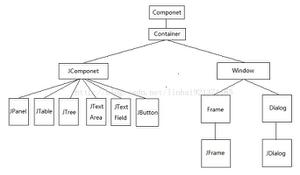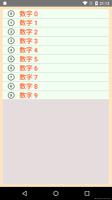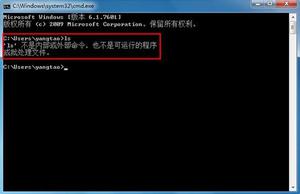Java访问基于NTLM协议的SharePoint List Web服务的示例!

最近发现Java的HttpClient从4.1版本以后就开始支持NTLM协议了,之前版本是不支持NTLM协议的(但可以通过开源的JCIFS library实现)。由于项目中其他系统(Java)需要调用基于NTLM协议的SharePoint List Web服务,之前是用了一个开源的Http组件JCIFS library实现模拟身份认证的,具体网址如下:http://jcifs.samba.org/src/,这样就可以正常访问SharePoint的列表服务了。
本文主要介绍一种代码更为简洁,使用更为简便的基于最新版本HttpClient 4.2.5,该组件下载网址如下:http://hc.apache.org/downloads.cgi,
如Java程序需要访问SharePoint的自定义列表服务,在浏览器中查看此列表的XML如下图:
需要注意的是此XML的编码方式是采用UTF-8格式的,如采用Dom4j中解析此XML还需要进行特殊的处理,确保文件头是UTF-8格式的,默认并不是此格式,完整的Java示例代码如下:
import java.io.*;import org.apache.http.HttpEntity;
import org.apache.http.HttpResponse;
import org.apache.http.client.methods.HttpGet;
import org.apache.http.impl.client.DefaultHttpClient;
import org.apache.http.util.EntityUtils;
import org.apache.http.HttpHost;
import org.apache.http.auth.AuthScope;
import org.apache.http.auth.NTCredentials;
import org.apache.http.client.ClientProtocolException;
import org.apache.http.protocol.BasicHttpContext;
import org.apache.http.protocol.HttpContext;
import java.util.Iterator;
import org.dom4j.Document;
import org.dom4j.Element;
import org.dom4j.io.SAXReader;
public class Test {
/**
* @param args
*/
public static void main(String[] args) {
// TODO Auto-generated method stub
DefaultHttpClient httpclient = new DefaultHttpClient();
NTCredentials creds = new NTCredentials("UsrName", "PassWord", "my", "contosouat");
httpclient.getCredentialsProvider().setCredentials(AuthScope.ANY, creds);
HttpHost target = new HttpHost("portal.contoso.uat", 80, "http");
// Make sure the same context is used to execute logically related requests
HttpContext localContext = new BasicHttpContext();
// Execute a cheap method first. This will trigger NTLM authentication
HttpGet httpget = new HttpGet("http://portal.contoso.uat/sites/cockpit/_vti_bin/listdata.svc/自定义列表");
//httpget.setHeader("accept", "application/json");
HttpResponse response1 = null;
try {
response1 = httpclient.execute(target, httpget, localContext);
//System.out.print(response1.toString());
} catch (ClientProtocolException e) {
// TODO Auto-generated catch block
e.printStackTrace();
} catch (IOException e) {
// TODO Auto-generated catch block
e.printStackTrace();
}
HttpEntity entity1 = response1.getEntity();
try {
delFile("c:/自定义列表.xml");
saveFile("c:/自定义列表.xml",EntityUtils.toString(entity1),false);
SAXReader reader = new SAXReader();
try
{
Document document = reader.read(new File("c:/自定义列表.xml"));
Element rootElm = document.getRootElement();
// 枚举根节点下所有子节点
for (Iterator ie = rootElm.elementIterator(); ie.hasNext();)
{
Element element = (Element) ie.next();
if(element.getName()=="entry")
{
for (Iterator ic = element.elementIterator(); ic.hasNext();)
{
Element Celement = (Element) ic.next();
if(Celement.getName()=="content")
{
for (Iterator ip = Celement.elementIterator(); ip.hasNext();)
{
Element Pelement = (Element) ip.next();
for (Iterator ix = Pelement.elementIterator(); ix.hasNext();)
{
Element Xelement = (Element) ix.next();
if(Xelement.getName()=="人员名称" || Xelement.getName()=="应发工资")
{
System.out.println(Xelement.getName()+":"+Xelement.getData());
}
}
//System.out.println(Pelement.getName());
}
//System.out.println(Celement.getName());
}
}
}
}
}catch (Exception e) {
// TODO Auto-generated catch block
e.printStackTrace();
}
} catch (Exception e) {
// TODO Auto-generated catch block
e.printStackTrace();
}
}
public static void saveFile(String file, String data, boolean append) throws IOException {
BufferedWriter bw = null;
OutputStreamWriter osw = null;
File f = new File(file);
FileOutputStream fos = new FileOutputStream(f, append);
try {
// write UTF8 BOM mark if file is empty
if (f.length() < 1) {
final byte[] bom = new byte[] { (byte)0xEF, (byte)0xBB, (byte)0xBF };
fos.write(bom);
}
osw = new OutputStreamWriter(fos, "UTF-8");
bw = new BufferedWriter(osw);
if (data != null) bw.write(data);
} catch (IOException ex) {
throw ex;
} finally {
try { bw.close(); fos.close(); } catch (Exception ex) { }
}
}
/**
* 删除文件
* @param filePathAndName String 文件路径及名称 如c:/file.xml
* @param fileContent String
* @return boolean
*/
public static void delFile(String filePathAndName) {
try {
String filePath = filePathAndName;
filePath = filePath.toString();
java.io.File myDelFile = new java.io.File(filePath);
myDelFile.delete();
}
catch (Exception e) {
System.out.println("删除文件操作出错");
e.printStackTrace();
}
}
}
该代码执行结果如下图:
通过以上步骤就可以正常访问SharePoint的列表并可以进行正常解析数据,可以根据以上代码进一步扩展和完善,以满足实际需求。
| 本博客为软件人生原创,欢迎转载,转载请标明出处:软件人生(包含链接)。如您有任何疑问或者授权方面的协商,请给我留言。 |
以上是 Java访问基于NTLM协议的SharePoint List Web服务的示例! 的全部内容, 来源链接: utcz.com/z/389538.html









